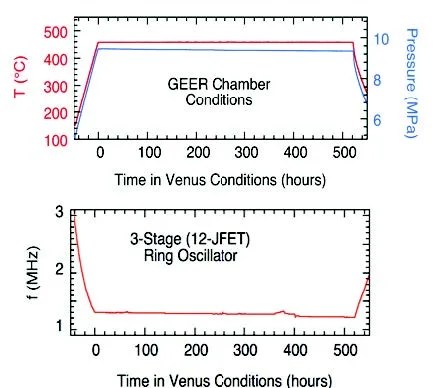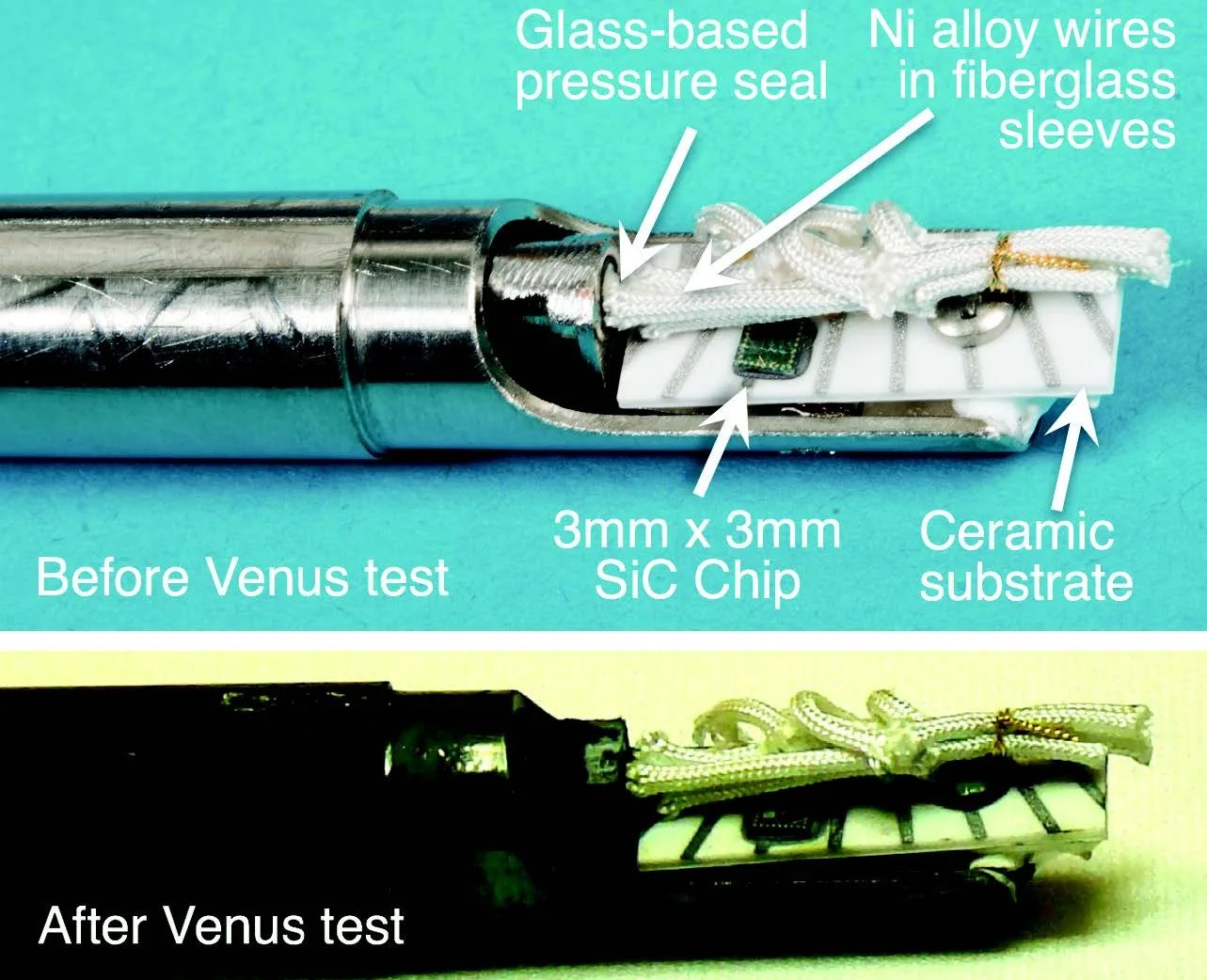Technology Development
NASA’s future planetary exploration efforts, including missions to Venus, require electronics capable of surviving temperatures of 470° C and above for long durations. Such durable electronics eliminate the need for cooling systems to enable sustained operations. Previous operation of electronics at Venus surface conditions (e.g., in Venus missions) has been limited to a few hours in a protected pressure/temperature enclosure, due to the extreme environment. Standard electronics used commercially and for planetary exploration are based on silicon semiconductors, which do not operate at Venus temperatures. A team at NASA Glenn Research Center (GRC) has been working to develop hightemperature electronics based on silicon carbide (SiC) semiconductors that can operate at Venus temperatures and above. Recently, the team demonstrated that a variety of the world’s first moderately complex SiC-based microcircuits (tens or more of transistors) could withstand up to 4000 hours of operation at 500° C. These demonstrations included core circuits such as digital logic circuits and analog operational amplifiers that are used throughout electronic systems.
Testing of two these circuits occurred in the Glenn Extreme Environments Rig (GEER), which simulates Venus surface conditions including high temperature and pressure. In April 2016, the team demonstrated a SiC high-temperature 12-transistor ring oscillator at Venus surface conditions (460° C, 93 atm pressure, supercritical CO² and trace gases) in the GEER for 21.7 days (521 hours) with good stability throughout the entire test. This Venus surface demonstration of moderately complex electronics is a significant world record—orders of magnitude in duration beyond any other Venus surface condition electronics demonstration. Testing in Venus conditions was ended after 21 days for scheduling reasons; similar ring oscillator circuits have shown thousands of hours of operations at 500° C in Earth-air ambient oven conditions.
Impact
These advances are a paradigm shift that broadly enables new science exploration, especially for the Venus surface. SMD began a project in FY17—the Long-Life In-situ Solar System Explorer (LLISSE)—that will incorporate these new SiC electronics. LLISSE is developing a functioning prototype of a low-cost scientific probe capable of providing basic, but highvalue, science measurements from the surface of Venus continuously for months or longer. Such a probe was not viable previously, and will revolutionize our understanding of the Venus surface. This new technology also impacts potential development of probes exploring the Gas Giants (Jupiter, Saturn, Uranus and Neptune) or the surface of Mercury. SiCbased electronics could also enable an intelligent aeronautics engine to monitor and respond to its own health state, and could be used in a range of commercial applications, such as deep oil well drilling or industrial processing.
Status and Future Plans
In August 2016, the team completed fabrication of “next-generation” extreme temperature integrated circuit wafers featuring significantly more complex digital and analog circuits (more than 100 transistors). In October, the team initiated prolonged 500° C testing (Earth-air atmosphere) of “next-generation” integrated circuits with more than 100 transistors. Plans include producing increasingly complex high temperature SiC electronics to meet the needs of the LLISSE project and other applications. NASA will use a “design and build” approach to increase the capabilities of the basic electronics components, while providing new circuit types as needed for specific applications.
Sponsoring Organization
Multiple projects have supported this technology development in 2016. PSD’s PICASSO program sponsored work to develop a range of SiC core circuits for multiple applications and missions. SMD’s LLISSE Project worked to refine high-temperature SiC circuits for use on a Venus surface lander. Additionally, the NASA Aeronautics Research Mission Directorate’s Transformative Tool and Technologies Project supported development of high-temperature electronics for aeronautic engine applications.



































